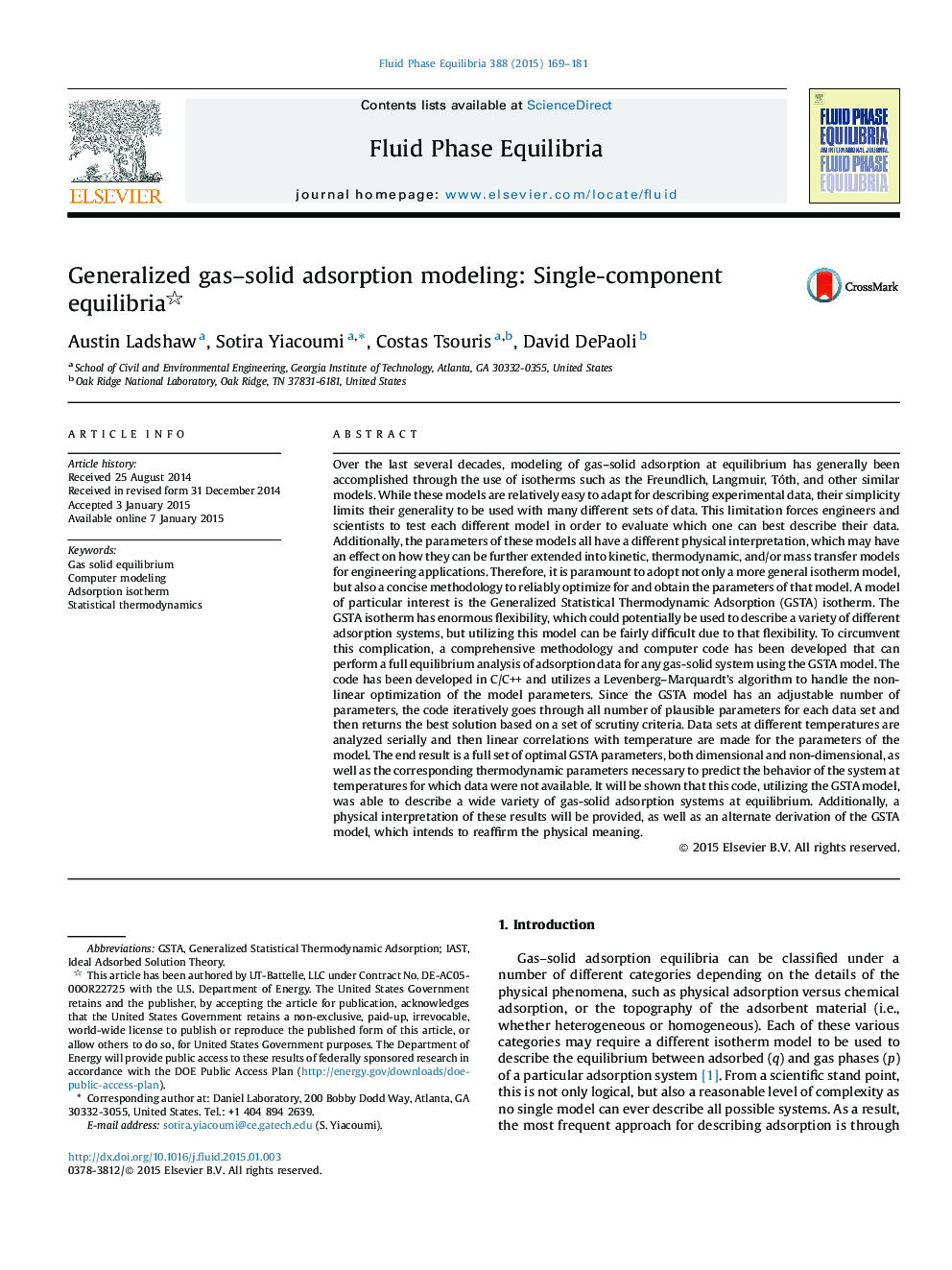| کد مقاله | کد نشریه | سال انتشار | مقاله انگلیسی | نسخه تمام متن |
|---|---|---|---|---|
| 201698 | 460565 | 2015 | 13 صفحه PDF | دانلود رایگان |

• We focus on the Generalized Statistical Thermodynamic Adsorption (GSTA) model.
• An alternate derivation of the GSTA model is provided to enhance its significance.
• We develop algorithms to obtain the most likely parameters of the model.
• The algorithms are validated using adsorption isotherm data from literature.
• This modeling approach simplifies the analysis of adsorption isotherm data.
Over the last several decades, modeling of gas–solid adsorption at equilibrium has generally been accomplished through the use of isotherms such as the Freundlich, Langmuir, Tóth, and other similar models. While these models are relatively easy to adapt for describing experimental data, their simplicity limits their generality to be used with many different sets of data. This limitation forces engineers and scientists to test each different model in order to evaluate which one can best describe their data. Additionally, the parameters of these models all have a different physical interpretation, which may have an effect on how they can be further extended into kinetic, thermodynamic, and/or mass transfer models for engineering applications. Therefore, it is paramount to adopt not only a more general isotherm model, but also a concise methodology to reliably optimize for and obtain the parameters of that model. A model of particular interest is the Generalized Statistical Thermodynamic Adsorption (GSTA) isotherm. The GSTA isotherm has enormous flexibility, which could potentially be used to describe a variety of different adsorption systems, but utilizing this model can be fairly difficult due to that flexibility. To circumvent this complication, a comprehensive methodology and computer code has been developed that can perform a full equilibrium analysis of adsorption data for any gas-solid system using the GSTA model. The code has been developed in C/C++ and utilizes a Levenberg–Marquardt’s algorithm to handle the non-linear optimization of the model parameters. Since the GSTA model has an adjustable number of parameters, the code iteratively goes through all number of plausible parameters for each data set and then returns the best solution based on a set of scrutiny criteria. Data sets at different temperatures are analyzed serially and then linear correlations with temperature are made for the parameters of the model. The end result is a full set of optimal GSTA parameters, both dimensional and non-dimensional, as well as the corresponding thermodynamic parameters necessary to predict the behavior of the system at temperatures for which data were not available. It will be shown that this code, utilizing the GSTA model, was able to describe a wide variety of gas-solid adsorption systems at equilibrium. Additionally, a physical interpretation of these results will be provided, as well as an alternate derivation of the GSTA model, which intends to reaffirm the physical meaning.
Figure optionsDownload as PowerPoint slide
Journal: Fluid Phase Equilibria - Volume 388, 25 February 2015, Pages 169–181